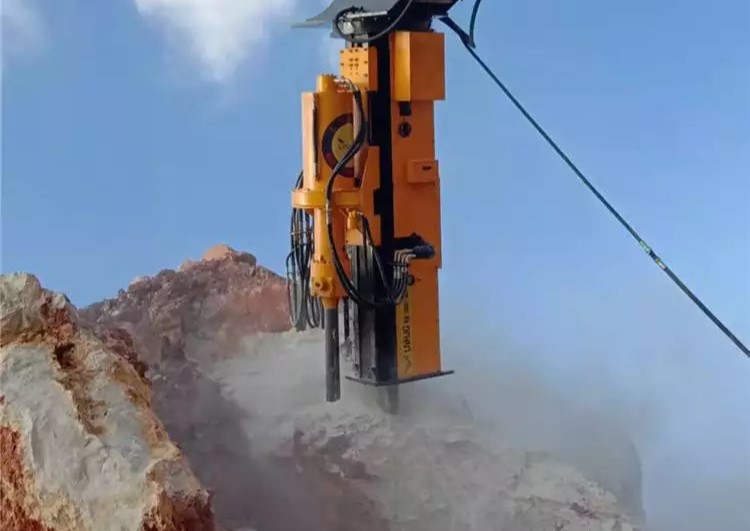Rock drilling machines are indispensable tools in the construction, mining, and quarrying industries, where they are used for creating holes in rock surfaces to prepare for blasting. These machines have revolutionized the way we excavate and mine, making the process more efficient, safer, and environmentally friendly. In this article, we will delve into the world of rock drilling machines, exploring their types, applications, and how they contribute to the success of blasting operations.

Understanding Rock Drilling Machines
Rock drilling machines, also known as rock drills, are designed to bore holes into solid rock surfaces. These machines can be powered by compressed air (pneumatic), hydraulic systems, or electric motors, depending on the model and application. They are typically equipped with a drill bit that is attached to a long, hollow steel rod, which is used to penetrate the rock. The drilling process is facilitated by the rotation of the drill bit and the application of force to break the rock.
Types of Rock Drilling Machines
1. Down-the-Hole (DTH) Drills:
DTH drills are widely used in the mining industry for drilling holes for blasting. They are known for their high drilling speed and efficiency. In this type of drill, the hammer and drill bit are located at the bottom of the hole, which allows for the direct transmission of energy to the rock, reducing energy loss and increasing drilling efficiency.
2. Rotary Drills:
Rotary drills are versatile and can be used for both surface and underground applications. They use a rotating drill bit to cut through the rock, and the cuttings are removed by a drilling fluid. Rotary drills are particularly useful for drilling large diameter holes and in areas with complex geology.
3. Hydraulic Drills:
Hydraulic drills are powerful and efficient, making them suitable for heavy-duty applications. They use hydraulic power to rotate the drill bit and apply force, resulting in high drilling speeds and the ability to handle tough rock conditions.
4. Cable Percussion Drills:
These drills are used primarily for exploration and geotechnical investigations. They use a percussive action to break the rock, with the drill string being lifted and dropped repeatedly. The cuttings are collected in the drill string and brought to the surface for analysis.
Drilling Process
1. Site Preparation:
- Clear the drilling area of any obstructions.
- Ensure the drilling equipment is set up securely and aligned correctly.
2. Drilling:
- Drill holes according to the blast design plan, considering factors like hole depth, diameter, and spacing.
- Maintain the correct drilling parameters to optimize penetration rate and bit life.
3. Blasting:
- Insert explosives into the drilled holes.
- Connect the explosives using detonating cords and delay detonators.
- Ensure safety protocols are followed during the blasting operation.
Applications of Rock Drilling Machines in Blasting
Rock drilling machines are crucial in blasting operations, as they are used to create the holes into which explosives are placed. The success of a blasting operation depends heavily on the quality of the drilling. Here’s how rock drilling machines contribute to the process:
1. Accuracy:
Precise drilling is essential for effective blasting. Rock drilling machines can drill holes to exact specifications, ensuring that the explosives are placed in the correct positions for optimal results.
2. Efficiency:
The speed and power of rock drilling machines enable faster drilling, reducing the time required for preparation. This efficiency is crucial in large-scale operations where time is a critical factor.
3. Safety:
By automating the drilling process, rock drilling machines minimize the need for manual labor in hazardous environments, thereby reducing the risk of accidents.
4. Cost-Effectiveness:
The use of rock drilling machines reduces the overall cost of blasting operations by minimizing the need for labor, reducing the time required for drilling, and ensuring that explosives are used more efficiently.
Rock drilling machines are essential tools for the success of blasting operations in various industries. Their precision, efficiency, safety, and cost-effectiveness make them indispensable in modern construction, mining, and quarrying practices.





